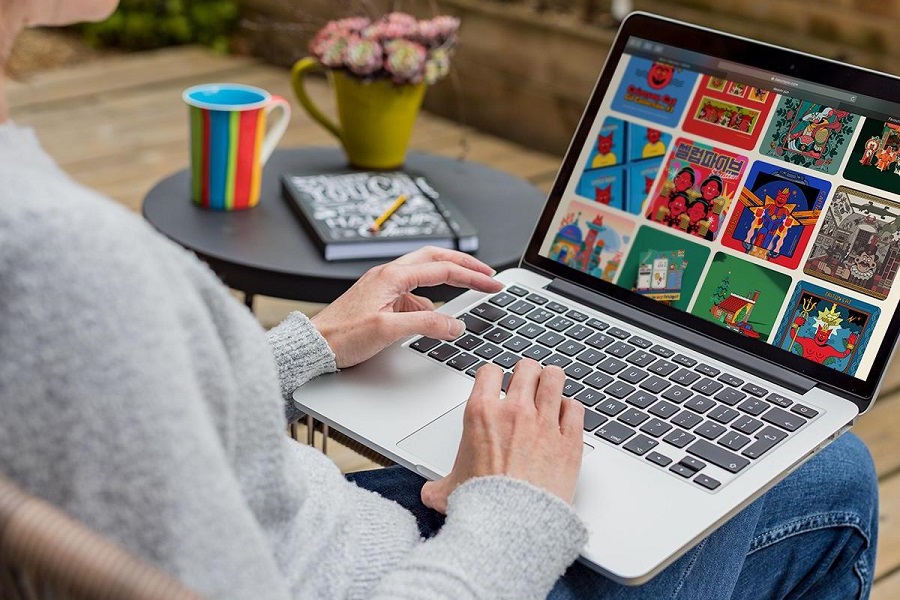Raised ink printing, also known as offset thermography, is a low-cost alternative to conventional engraving and embossing that generates the same three-dimensional imprint. Thermography is frequently regarded as a superior printing technology that improves the quality of any printed output.
Thermography printing has been around since the early 1900s, which may surprise you. As you read, you will get more familiar with the intricacies of this notion, making you a more knowledgeable expert on the subject. If it makes you want to purchase thermography items, organizations like TEAM Concept Printing can assist you.
Enterprises of all sizes have used their thermography services for letterheads and business cards. Whatever you want from them, it will undoubtedly stand out from the crowd.
An Overview of Thermographic Printing
Have you ever heard of infrared printing? The word thermography printing refers to two types of printing in which pictures or text are created on paper using heat. The most basic thermographic printing process uses paper coated in a material that changes color when heated. Thermal printing is what older fax machines and cash register printers utilize. Printing using thermal transfer technology is also feasible, which is fairly difficult. The ink from a certain ribbon may be melted into paper.
Few documents were kept when thermographic printing was introduced. As a result, its early history is mostly unknown. Thermal printing, on the other hand, has been around since the early 1900s.
Thermography was a method of incorporating some extra unique effects into the printing process. To achieve effects prior to the introduction of thermography printing, it was common practice to dust powdered copal resin on wet ink, elevate the substrate to a vertical position, and shake off the excess powder.
Copal varnish resins are derived from the sap of a variety of tropical plants. When polished, the copal’s variety of hues, from transparent to vivid yellowish brown, is on full show. It is used to manufacture printing ink and varnish because it dissolves in hot alcohol and organic solvents. To get the required raised printing look, the object would be placed on a heat source, such as a specialized hot plate.
Thermography needed much expertise until the first automated thermography apparatus was built in 1915. The Virkotype Company, legend has it, created the first self-operating thermograph. Carlson Company began selling Virkotype hardware and software to Europe in 1920. Because of its lower cost and greater availability, thermographic printing quickly surpassed engraving with copper or steel as the preferred method of adding embossing effects to ink.
After WWII, thermography became increasingly widespread. As powders and equipment improved, more printers adopted the method. Since 1900, thermographic printing has expanded significantly, becoming a standard printing process capable of elevating any item of stationery.
What Is the Process of Thermography?
Thermography is a post-printing process that uses thermography machines in addition to regular printing processes.
Offset printing ink is combined with powdered resin in a specific technique known as thermography, which is then baked to cause the resin to rise and give the ink a raised, textured appearance. To begin, an offset printer creates the final output using slow-drying ink. Before sending the wet printed sheets, a resin-dusting tunnel applies resin to the inked places and removes any excess. After that, the resin is heated until it melts, resulting in a somewhat larger, glassy, raised picture.
In thermography, many types of powder are utilized, including fine, medium, coarse, dull, matte, and glossy powder. The granules absorb the color of the ink underneath them due to their transparency. Transparent ink may be used to make drawings that can be seen through.
When Is Thermography Printing Appropriate?
The vast majority of customers who utilize thermographic printing services do so to create business cards and other office stationery. It’s also used for items like wedding invitations, greeting cards, report covers, and other printed promotional materials. Thermography may only be used in certain areas of the sheet to generate unique visual effects.
It is also capable of printing Braille text. It is occasionally used to print diplomas as an alternative to the more expensive and time-consuming engraved embossing method.
Thermographic Printing Colors
A transparent powder is usually necessary so that the elevated region can take on the color of the printed ink. Powders come in a variety of colors, including white, gold, silver, copper, and even glow-in-the-dark powders. You may be confident that thermography can manage any aesthetics you require.
There Are Several Advantages to Thermography Printing
Raised printing creates a polished, eye-catching print. Furthermore, thermography is significantly less costly than engraving or embossing. It adds a tactile dimension to the printed material. After passing through the heat tunnel, the ink on the printed product is completely dry, allowing for rapid cutting and packing.
Making a High-Quality Thermographic Print
Consider the following suggestions when designing a thermography printing job. You should also consult with the experts at TEAM Concept Printing to go through your alternatives and secure the best possible outcomes for your project.
- Because powder might cover the non-image region, screens and halftones are not recommended for Thermography. Similarly, try to avoid both complicated and tiny components. Keep your score at seven or fewer.
- The dimensions of thermographic pictures are not restricted. Large color areas, on the other hand, may create blisters.
- Thermography can be performed on either coated or uncoated paper. The uncoated sheets stand out visually as a contrast to the glossy thermography surface.
- Coverings with basic weights ranging from 20 lb to three times that thickness are acceptable. If you want your prints to appear their best, avoid using textured materials.
Summary
Thermography is a one-of-a-kind printing method that produces some of the greatest outcomes of any commercial printer. While you do not need to be aware of every detail, understanding what thermography can accomplish for you can assist you in deciding whether or not to have your goods printed with it.
The effectiveness of your advertising and brand-building endeavors may be determined by the quality of your printed materials. When looking for someone to assist you with printing, you should look into the company’s credibility to ensure that they can properly transfer your thoughts into textual form. TEAM Concept Printing attempts to suit its client’s needs by providing a number of choices, including thermography. Click here for even more information.

